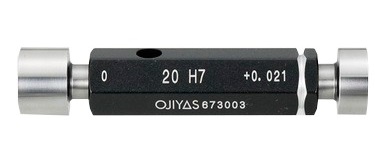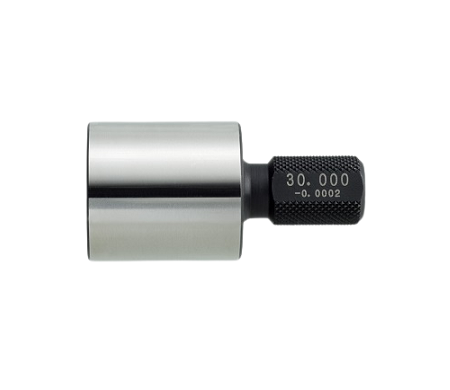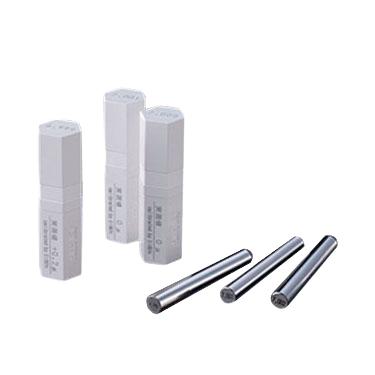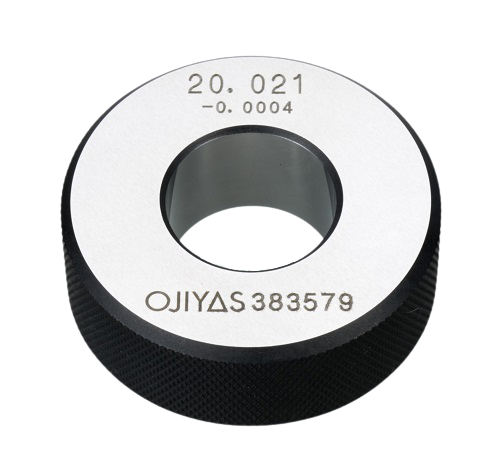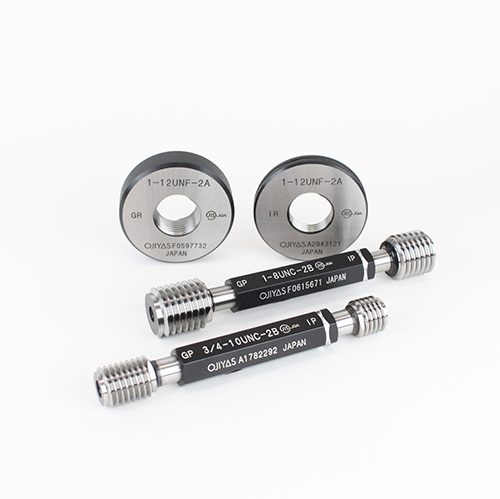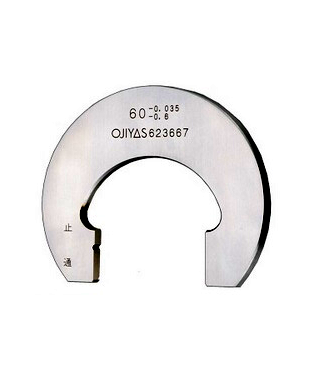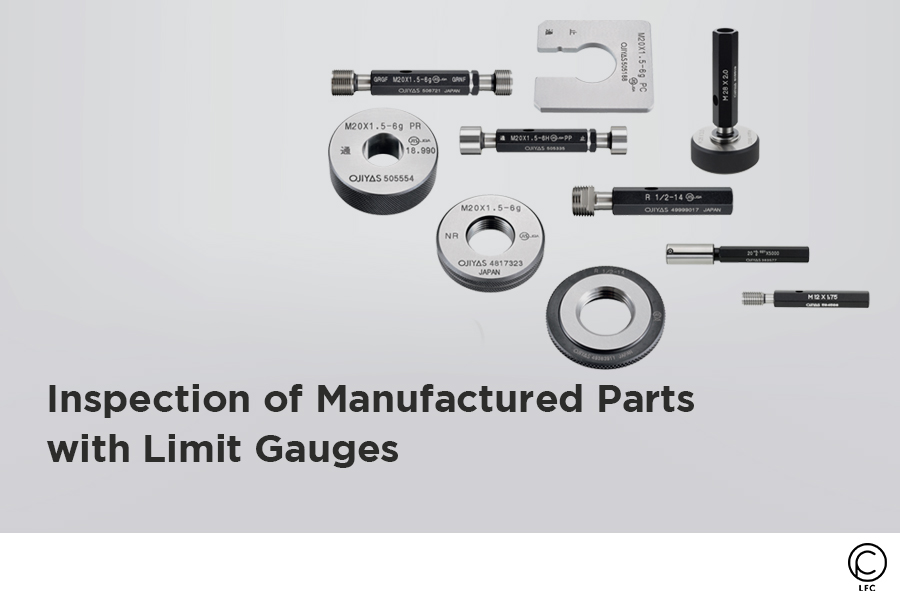
What Are Limit Gauges?
Limit gauges are used to check the dimensions of a manufactured component. As gauges are without scale, we are unable to use it to determine the actual size of dimensions of parts. They are different from conventional measuring tool. We use a limit gauge to inspect whether a work piece is within the specified tolerance. They are also often known as a Go and No-Go gauge. A principle of using such gauges, is for the Go end to be used to check that the dimension of the part passes inspection. On the other hand, the No-Go gauge should not be able to pass the same dimension of the part. It serves as a check when a measured part fails inspection.
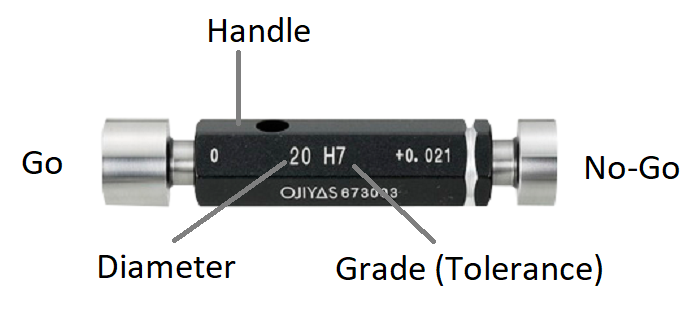
The Go- and No-Go gauges are produced according to the dimensions of the manufactured component. The Go gauge is usually equivalent to the minimum permissible dimension of the component. The No Go gauge is equivalent to the maximum permissible dimension of the measured component.
Quality Control & Limit Gauges
Limit gauges are precise and user friendly. They are normally produced to one tenth of the tolerance of the component they are used to measure. For instance, if the tolerance of the manufactured part stands at 0.07 mm, the limit gauge is usually precisely produced to 0.007 mm. Limit gauges are also wear and corrosion resistant. Ideally, they should also be produced with a thermally stable material. It should be resistant to expansion and contraction in different environmental conditions.
Many of us believe that measuring manufactured parts is the ideal method. However, this may not necessarily be the most practical solution. It is time consuming to measure each dimension of your workpiece in big volumes. Limit gauges offer a quicker and easier way to check parts in massive quantities. Besides this, we would want to achieve accuracy of the inspection and still be able to do it in the most economical way. This makes limit gauges an ideal solution for repetitive checking of manufactured parts. Other alternatives to checking dimensions using precision instruments, like the caliper and micrometer, tend to be time consuming and require skilled or semi-skilled operators.
Advantages of Limit Gauges
- Saves Time
- Using limit gauges to inspect parts is faster than measuring them directly. This can help to reduce cycle time of the parts produced.
- Large Volume
- Limit gauges are conveniently used in mass production for checking and controlling various dimensions.
- Easy to use
- Semi-skilled operators can easily use limit gauges. Some measuring instruments require more skill and training.
- Check multiple
- features of a part: A well-designed limit gauge can check both linear and geometric dimensions simultaneously.
- Economical
- Limit gauges tend to be lower in price than measuring instruments. They can be economical to use when you need to check a vast number of parts.
Limitations of Limit Gauges
-
It does not measure
- Limit gauges are unable to show the actual value of dimension being checked. They can only let us know whether the part is within the prescribed tolerance.
-
Error from wear and tear
- It is recommended for users to regularly calibrate and check their limit gauges. Such gauges may become less accurate after long usage due to wear.
-
Costly to produce very precise gauges
-
It can become costly to produce the limit gauge when the part to measure is exceedingly small. For instance, it would cost a lot to produce a limit gauge with 0.001 mm tolerance, to check the work tolerance of about 0.01 mm.
-
Types of Limit Gauges LFC Sells
Plug Gauges
Plug gauges are used to check the inside diameters of parts. They are cylindrical in shape and come in pairs, Go and No-Go. One of them has a dimension at the maximum limit, the other is at a minimum limit. This is according to the size of the hole the gauge is to inspect. The plug gauge will ensure the interchangeability of engagement between the hole and the shaft. Read here to find out more about plug gauges and what we have in store to support you with.
Pin Gauges
Pin gauges are cylindrical pin shaped plugs sized to a high precision. The main function of a pin gauge is to inspect the inner diameters of your workpiece. They are commonly used similarly to a Go and No-Go gauge to qualify whether a hole is within a certain specification. You can also use it to test for geometric deviations in measurements. Pin gauges are useful for checking the straightness of a deep hole.
They can be made of many types of materials: Steel, Carbide, Ceramic, Zirconia, Hard Metal Alloy. Click here to read our blog post about pin gauges.
Ring Gauges
A ring gauge, or ring gage, is a cylindrical ring of a thermally stable material, often steel, whose inside diameter is finished to gauge tolerance and is used for checking the external diameter of a cylindrical object.
Ring gauges are used for comparative gauging as well as for checking, calibrating, or setting of gauges or other standards. Individual ring gauges or ring gauge sets are made to variety of tolerance grades in metric and English dimensions for master, setting, or working applications. Here's a guide on ring gauge that we have written if you want to find out more about them.
Thread Gauges
Thread gauges are used to check the dimensions of a manufactured part’s thread form angle, pitch, and diameter. Thread gauges can come in plug and ring form. Thread plug gages are used to check tolerances of internal threaded (tapped) holes of parts according to a prescribed specification. On the other hand, thread ring gauges are metrology tools that are used for gauging the outer diameters of pins, shafts, splines, fasteners, dowels, studs, and other machined cylindrical parts.
Each gauge comprises a GO gauge and a NO GO gauge. Both gauges are used to check the thread hole of the workpiece.
Snap Gauges
A snap gauge is also another type of a Go- and No-Go gauge. It is a limit gauge with permanently fixed measurement aperture(s) (gaps) which is used to quickly verify whether an outside dimension of a part matches a specific dimension or falls within predefined tolerances.
Ojiyas Gauges
Ojiyas (Ojiya Seiki Co., Ltd.) manufactures high quality thread gauge, measuring gauges, air micrometers and its accessories, and various inspection jigs. The company aims to continually pursue an elevated level of precision manufacturing technologies and measurements to maintain high quality products. Ojiyas products are widely used in various industries – automotive, aerospace, bicycle etc. The company partakes in helping manufacturers through ensuring the accuracy of her measuring instruments. Ojiyas is proud to produce measuring tools which are high in quality, short in delivery time & priced reasonably. As a gauge maker, Ojiyas will continue to provide high quality and environmentally friendly products to satisfy the customer needs.
LFC is proud to work closely with Ojiyas as their authorized distributor in Singapore and Indonesia. Contact us if you wish to discuss your gauging applications further. Click here to see Ojiyas's Catalog.
References
1. Limit gauges: Need and advantages: Metrology. Your Article Library. (2016, December 23). Retrieved December 14, 2021, from https://www.yourarticlelibrary.com/metrology/limit-gauges-need-and-advantages-metrology/95173.
2. Main types of limit gauges (with diagram): Metrology. Your Article Library. (2016, December 23). Retrieved December 14, 2021, from https://www.yourarticlelibrary.com/metrology/main-types-of-limit-gauges-with-diagram-metrology/95226.
3. Saha, K. (2020, October 26). Go and no-go principle, Taylor's Principle & Gauges. MechTalk. Retrieved December 14, 2021, from https://www.mechtalk.info/2020/03/go-nogo-principle-taylors-principle.html.
4. Suresh Lal Follow Assistant Professor in Mechanical Engineering at College of Engineering Trivandrum. (n.d.). Limit gauges. SlideShare. Retrieved December 14, 2021, from https://www.slideshare.net/sureshlal15/limit-gauges.

